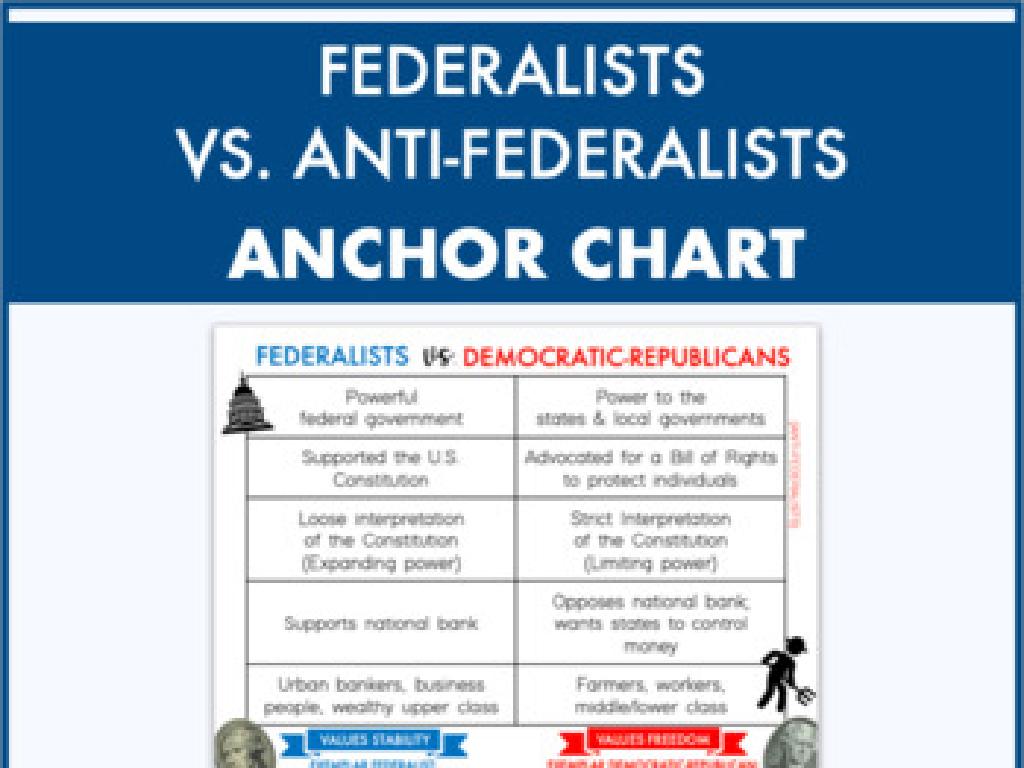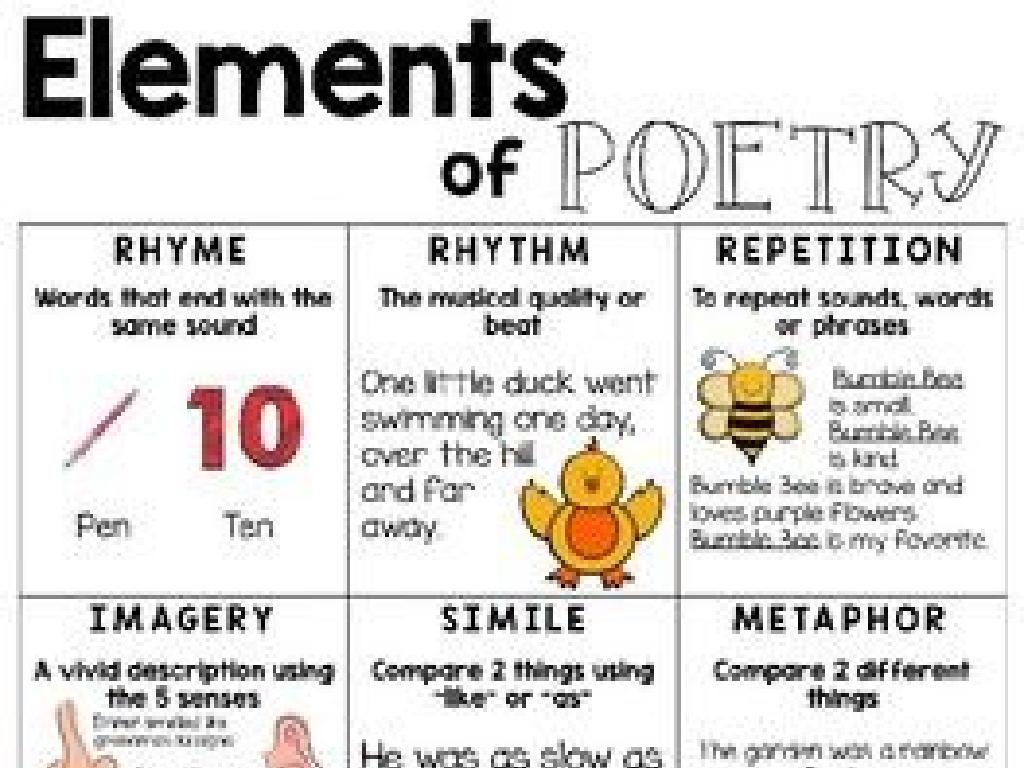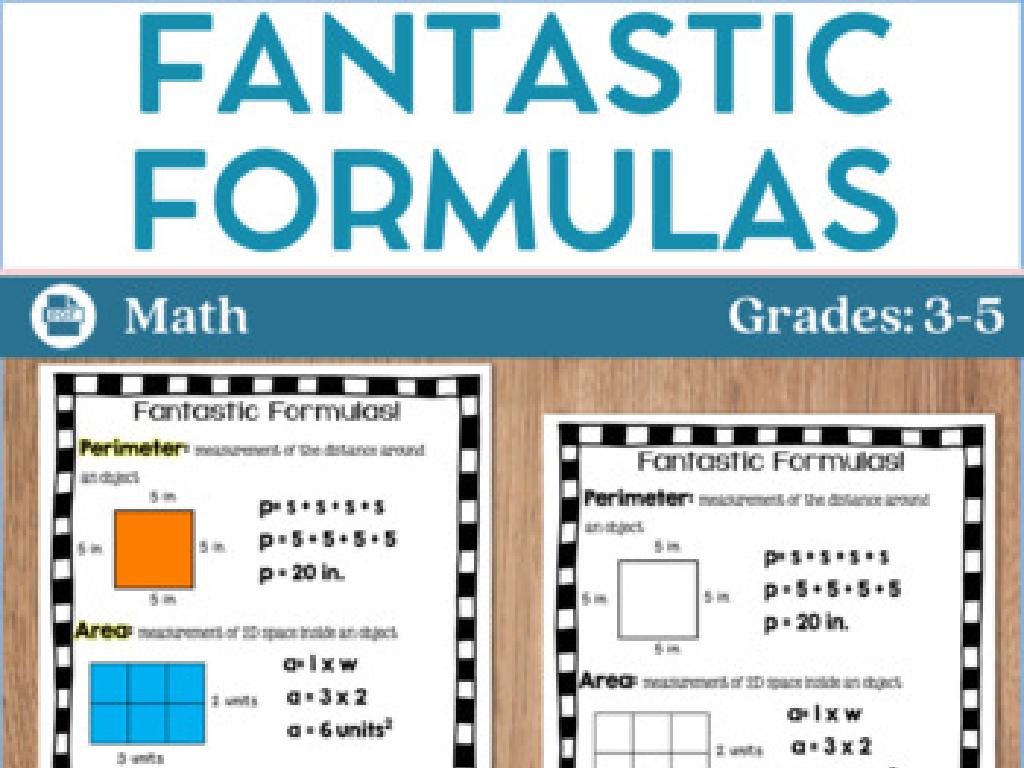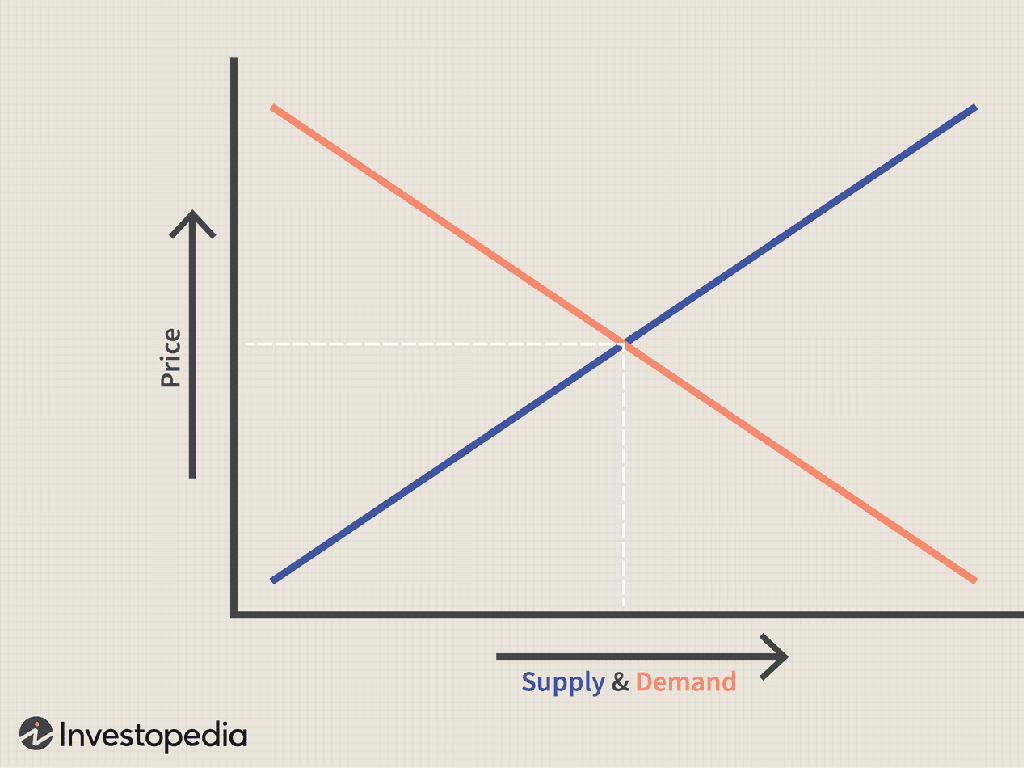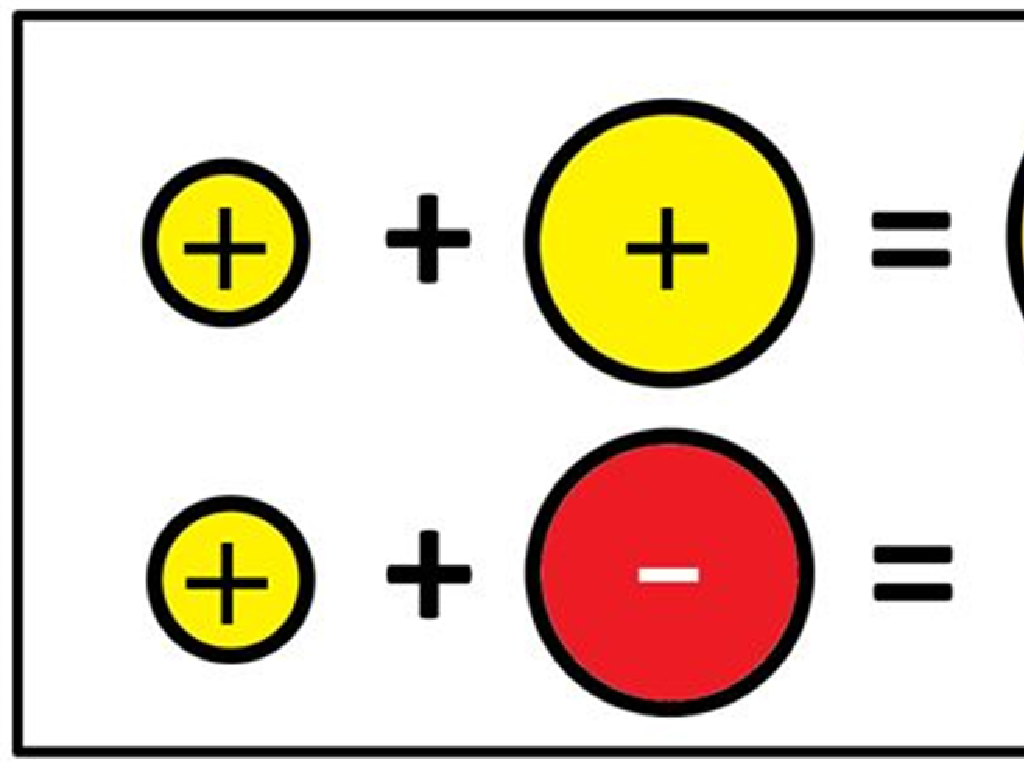Fewer And More - Compare In A Mixed Group
Subject: Math
Grade: Pre-k
Topic: Compare Groups
Please LOG IN to download the presentation. Access is available to registered users only.
View More Content
Math Adventures: Fewer and More
– Greet our little mathematicians
– Discover ‘fewer’ and ‘more’
– ‘Fewer’ means not as many, ‘more’ means a greater number
– Learn to compare group items
– Which group has fewer? Which has more?
– Fun activities to practice
|
Welcome the children to the class with enthusiasm to set a positive tone for the lesson. Introduce the concepts of ‘fewer’ and ‘more’ using simple, relatable examples, such as comparing the number of blocks or toys in two different groups. Explain that comparing helps us understand quantities and numbers better. Engage the children with hands-on activities where they can physically group items and visually see which group has fewer or more items. This could include sorting colored balls, counting stickers, or grouping snack items. Encourage participation and praise their efforts to build confidence. The goal is to make the learning process interactive and enjoyable, fostering an early love for math.
Understanding ‘Fewer’ in Groups
– ‘Fewer’ means not as many
– Comparing 2 apples with 5 apples
– Which group has fewer? 2 or 5?
– Count to find which has fewer
– Use counting to determine ‘fewer’
– Group activity: Let’s count together!
– We’ll count as a class to learn!
|
This slide introduces the concept of ‘fewer’ to Pre-K students through a simple comparison of two groups of apples. Start by explaining that ‘fewer’ means there are not as many items in one group compared to another. Use real apples or apple illustrations to visually demonstrate the difference between having 2 apples versus 5 apples. Engage the students by counting together as a class to determine which group has fewer apples. This interactive approach helps solidify the concept of ‘fewer’ and encourages participation. For the activity, consider having different sets of objects for the students to compare and count in small groups or pairs, fostering a hands-on learning experience.
Understanding ‘More’ in Groups
– ‘More’ means having a greater number
– Comparing 3 oranges to 6 oranges
– Which pile is bigger, 3 or 6?
– Count to see which has more
– Use counting to find the larger group
– Practice with different items
– Try comparing with toys or blocks
|
This slide introduces the concept of ‘more’ to Pre-K students by comparing quantities in a group. Start by explaining that ‘more’ refers to a larger amount. Use visual aids like pictures of oranges to illustrate the difference between groups of 3 and 6. Encourage the students to count aloud the number of oranges in each group to determine which has more. Reinforce the concept by allowing students to practice with tangible items like toys or blocks, comparing different sets to identify which has more. This hands-on activity will help solidify their understanding of the concept of ‘more’.
Comparing Groups: Fewer and More
– Look at different item groups
– Mix apples and bananas
– Imagine a basket with both fruits
– Count to compare groups
– Use counting to see which group is bigger
– Find which has fewer or more
– Is there a group with less or more items?
|
This slide introduces the concept of comparing quantities within mixed groups to Pre-K students. Start by showing them groups of common items like fruits, and explain that even when items are different, like apples and bananas, we can still compare them by counting. Encourage the students to practice by counting items in pictures or in the classroom. Ask questions like ‘Which group has more apples?’ or ‘Are there fewer bananas than apples?’ This will help them understand the concept of ‘fewer’ and ‘more’ in a tangible way. Prepare a simple activity where students can group items and count them to determine which group has more or fewer items, fostering their counting and comparison skills.
Let’s Practice Together: Fewer or More?
– Look at pictures with different items
– Count items in each group
– Decide which has fewer or more
– Does the group of apples have more than the group of bananas?
– It’s okay to ask for help!
|
This slide is for an interactive class activity designed to help Pre-K students understand the concepts of ‘fewer’ and ‘more’ through visual aids. Display pictures with different groups of items, such as fruits, animals, or toys, and guide the students to count the items in each group. Then, ask them to compare the groups and decide which one has fewer or more items. Encourage participation by asking questions and providing support. Remember to reassure the students that it’s perfectly fine to ask for help. This activity will not only teach them about comparison but also reinforce their counting skills. Possible activities include comparing sets of blocks, crayons, or stickers. Make sure to have a variety of items to keep the activity engaging and cater to different interests.
Class Activity: Fewer or More Game
– Play a game with classroom objects
– Pick two groups of items
– Decide which has fewer or more
– Share with the class
|
This interactive game is designed to help Pre-K students understand the concepts of ‘fewer’ and ‘more’ through hands-on experience. Set up various groups of items around the classroom before the activity begins. Each student will have a chance to choose two groups and then compare them. They will need to determine which group has fewer items and which has more, and then communicate their findings to the class. For the teacher: Prepare different sets of items with varying quantities, ensure each student understands the rules, and guide them through the process if they struggle. Possible variations of the activity could include using colorful items to maintain engagement, grouping items by categories (e.g., shapes, colors, usage), or introducing a storytelling element where each group of items is part of a story.
Celebrating Our Comparison Skills!
– Congrats on comparing groups
– Mastery in finding fewer or more
– You can tell which group has less or more items now!
– Self-appreciation for hard work
– Remember to give yourself a pat on the back!
– Keep practicing at home!
– Try comparing toys or snacks to continue learning
|
This slide is meant to congratulate the Pre-K class on their progress in understanding the concepts of ‘fewer’ and ‘more’ when comparing groups. It’s important to celebrate their achievements to build confidence and reinforce their learning. Encourage the children to continue practicing these skills outside of the classroom with everyday items, which will help solidify their understanding. The teacher can facilitate a small activity where each child gives themselves a pat on the back, promoting a positive learning environment and self-recognition for their efforts.

